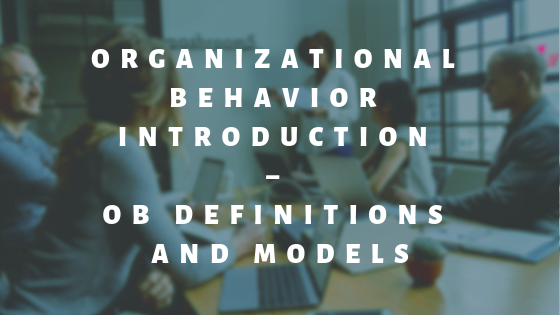Organizational behavior by itself states the behavior of individual or group of people in the organization and how to react or behave in present circumstances.
It is the study of human behavior in organizational settings, the interface between human behavior and the organization and the organization itself.
How things along with the circumstances affect every individual among group members and within an organization.
Organizational behavior is an interdisciplinary concept; it consists of psychology, philosophy, anthropology, leadership, science and human behavior. The three categories of Organizational Behavior are as follows:
- Individual
- Group of people
- Organization Behavior itself
Many theorists and researchers have noticed that individual’s behavior and personality differ from place to place as well as their roles.
When a person is in the organization, they act differently and act differently when outside the company or when they are with their informal group.
Organizational behavior studies the behavior of human during their roles in the organization.
Organizational behavior takes mostly from social psychology and industrial & organizational psychology.
The main aim of theorists is to revise the theories for the organization and develop a better and a good concept for agencies.
These theorists carefully examine and assume the levels made by them in their theories and also in concern to help managers and other people in the organization.
Organization Behaviour Definitions
- The study of workplace dynamics as it pertains to individual and group attitudes and actions.
- Organizational behavior studies the impact individuals, groups and structures have on human behavior within the organization.
- Organizational behavior is the field of study that investigates how organizational structures affect behavior within the organization.
Organization behavior is all about studying about the whole organization from various viewpoints and categories or levels, which includes behavior within and in relations with the other companies as well.
There are two kinds of organization behavior
Micro behavior
This sort of action means an individual, i.e., a person along with group members or group dynamics in an organization setting.
Macro behavior
This behavior studies and includes who organizations and industries are. How they perform, adapt their structures and strategies which help and guide them.
Organizational behavior increases the effectiveness in the society. The more we lean towards it to know it more precisely and concrete, the more it is useful.
Models of Organizational Behavior
Autocratic
Under this model of behavior, the model depends on power. Employees wholly depend on their boss for everything.
A person who is autocratic kind is demanding rude and arrogant type.
He threatens his people to make them work, and in case they do not follow his orders, he punishes them for it.
Custodial
It depends on economic resources. Employees depend on their organization for their welfare and security purpose. The company helps the employees for any financial purpose.
Collegial
It depends on management. Under this model, a person or a leader build a healthy relation of partnership with his employees. He binds them to a group so that they work together cooperatively (teamwork).
Supportive
It depends on leadership. It means how good a person can be a leader and how many followers he has.
In this model boss is a leader who tells everyone about their task but they have to perform in their way. Employees are free to work on their own.
System
It depends on caring and compassion. The leader care for his employees and will always there for them for any help and support.
